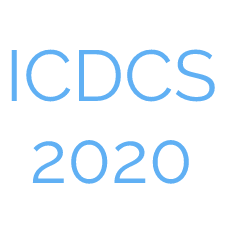

CSWPCN 2020
Workshop on Computing and Scheduling in Wireless Power and Communication Networks
July 8 - 10, 2020, Singapore


July 8 - 10, 2020, Singapore
| Paper submission: | Extended to March 18, 2020 (anywhere on the earth) |
| Notification of acceptance: | April 3, 2020 |
| Camera-ready paper due: | April 17, 2020 |
| Workshop date: | July 8-10, 2020 |
Yubin Zhao, Shenzhen Institutes of Advanced Technology, Chinese Academy of Sciences, China
[email protected]
Huaming Wu, Tianjin University, China;
[email protected]
Xiaofan Li, State Radio Monitoring Center Testing Center, China; [email protected]
Bin Liu, University of Strathclyde, UK
Haneul Ko, Korea University, Korea
Junqing Zhang, University of Liverpool, UK
Ji Qi, University of Amsterdam, Netherlands
Long Cheng, Dublin city university, Ireland
Mohammad Goudarzi, The University of Melbourne, Australia
Minxian Xu, Shenzhen Institutes of Advanced Technology, Chinese Academy of Sciences, China
Muhammed Tawfiqul Islam, The University of Melbourne, Australia
Kai Peng, Huaqiao University, China
Shashikant Ilager, The University of Melbourne, Australia
Shaohua Wan, Zhongnan University of Economics and Law, China
Xiaofei Wang, Tianjin University, China
Xiaolong Xu, Nanjing University of Information Science and Technology, China
Yingjun Deng, Tianjin University, China
Ying Liu, University of Glasgow, UK
Yuemin Ding,Norwegian University of Science and Technology, Norway
Yuan Yang, Southeast University, China
Zhiwei Lin, Ulster University, UK
Zhi Zhou, Sun Yat-sen University, China
Click here to download CSWPCN2020 CFP in PDF
Energy supply to mobile devices has always been a crucial issue faced by the development of wireless communication technologies. Recently, wireless power transfer (WPT) enables transfer of electrical energy from a power source to an electrical load without interconnecting wires, which gains increasingly popular in many applications, such as home appliances, medical implants, consumer electronics, and space robots. With WPT technologies, wireless devices are able to harvest energy from dedicated wireless transmitters to support their operation and information transmission. Thus, It is also a new promising solution to extend the lifetime of energy-constrained wireless networks and has been regarded as a key enabling technology for truly perpetual communications (e.g., RFID, body area networks, wireless sensor networks, Machine-to-Machine communications, the Internet of things).
This workshop is expected to bring together academic and industrial researchers in an effort to discuss the major technical challenges and contribute recent state-of-art technologies related to the computing technologies in wireless power and communication networks (WPCNs). And we also attempt to investigate the advanced scheduling methods for WPCNs. Topics of interest include but are not limited to the following:
The workshop welcomes submissions that cover, but are not limited to, the following topics:
Extended versions of the best papers will be considered for possible publication in .
| Time | July 8-10 |
|---|---|